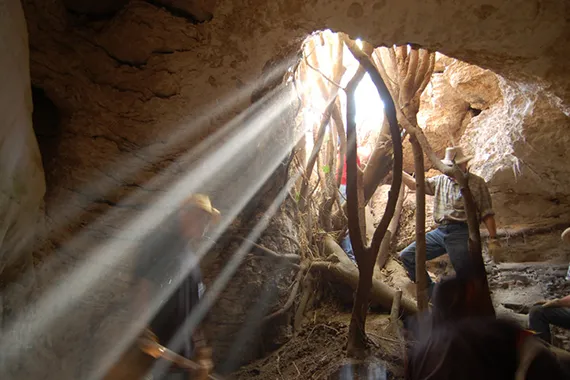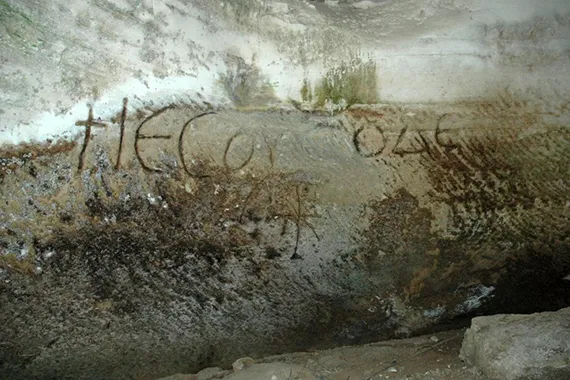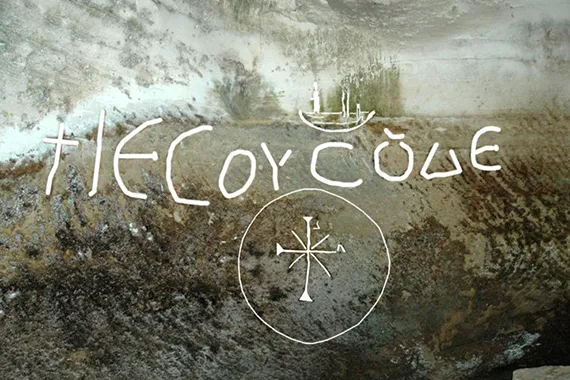
Jesus is/was Here Cave
What was possibly a small dwelling, a hiding place, or a chapel was discovered about a 100 yards west of the Jerusalem Cave. Guarded by an ancient fig tree still standing today, it was originally a bell-shaped Hellenistic water cistern hewn from the soft kirton limestone that characterizes the re-gion. The carving method—resulting in a type of herringbone pattern—is typical of the Hellenistic period, and indicates the use of a chisel. The entrance, which faces east, may indicate a sacred place. The underground installation is accessed using a narrow flight of stairs that curved along the line of the wall.
At the end of the Hellenistic period, the cistern went out of use and filled with earth. During the Byzantine period it was transformed into a small dwelling. This is evidenced mainly by the huge, slightly misspelled Greek inscription seen on one wall, measuring between 6 and 13.5 inches high and 85 inches long, reading “Jesus (is-was) here” Underneath the inscription is a chi-rho christogram comprising the superimposed first two letters of “Christ” chi (X) and rho (P).
Archaeologists are certain that the text “Jesus Here” is correctly interpreted. What is uncertain is whether it should be interpreted as “Jesus is Here” or “Jesus was Here.” In other words, was Je-sus physically present at the site (was) or does his spirit (is) permeate the site.
A ship was also etched into the wall above the inscription. A person, believed to be Jesus, is stand-ing in its far left and is raising his hand in a manner known from Christian iconography. A mast is seen on the right.
Video
Video Transcript
In October 2005, at the beginning of the excavations in the site of Beit Lehi, one of the students from the Kimber Academy made a survey in the area and found a Hellenistic water cistern (Jesus is Here Cave) dating to the 3rd century BCE. When we entered this water system we couldn’t believe what we saw: a large ancient Greek inscription starting with a cross mentioning the name of Jesus “Yasoos Hodus” in ancient Greek, which means “Jesus is Here.” Below the inscription we found a graffiti of cross with the abbreviation of the two ancient Greek letters chi and rho for Cristos—Christ—and the above the inscription a graffiti of a boat with a person standing on the front of the boat holding the sail, probably Jesus, preaching in the Sea of Galilee. This was probably used as a hermit cell for one of the monks who lived in the site of Beit Lehi in the 5th century CE.
Virtual Tour
The virtual tour for this location works on your computer web browser as well as a tablet or a phone. Best of all, it works on your headset. For instructions using an Oculus Quest, please see our virtual visit page.
Image Gallery



